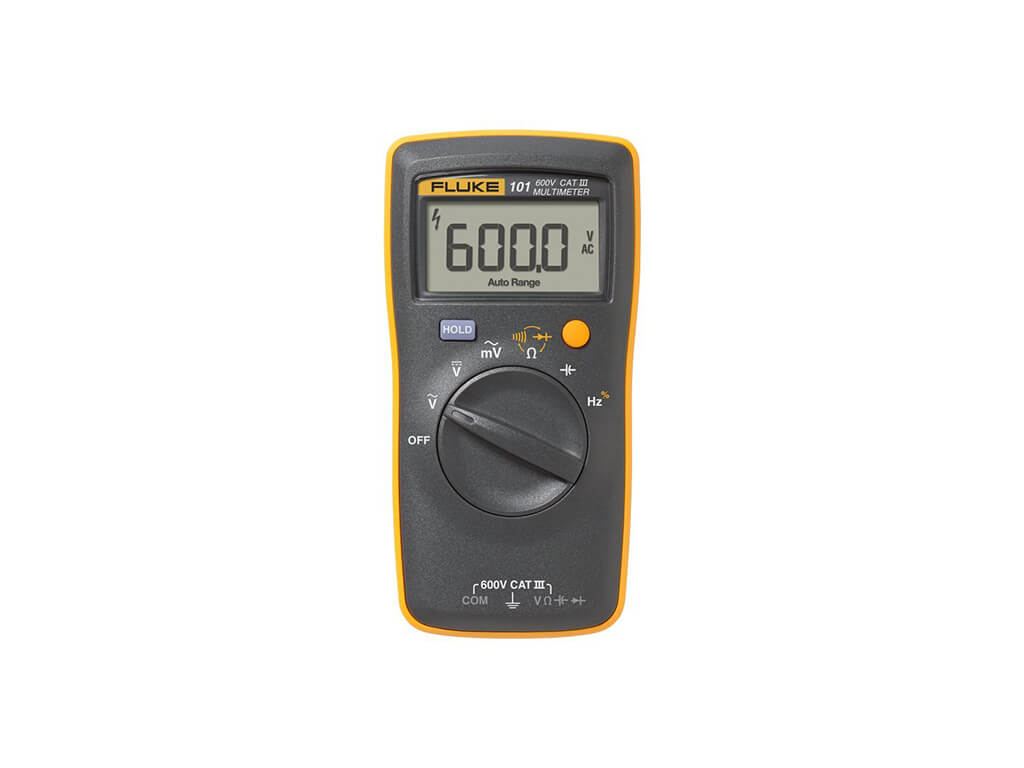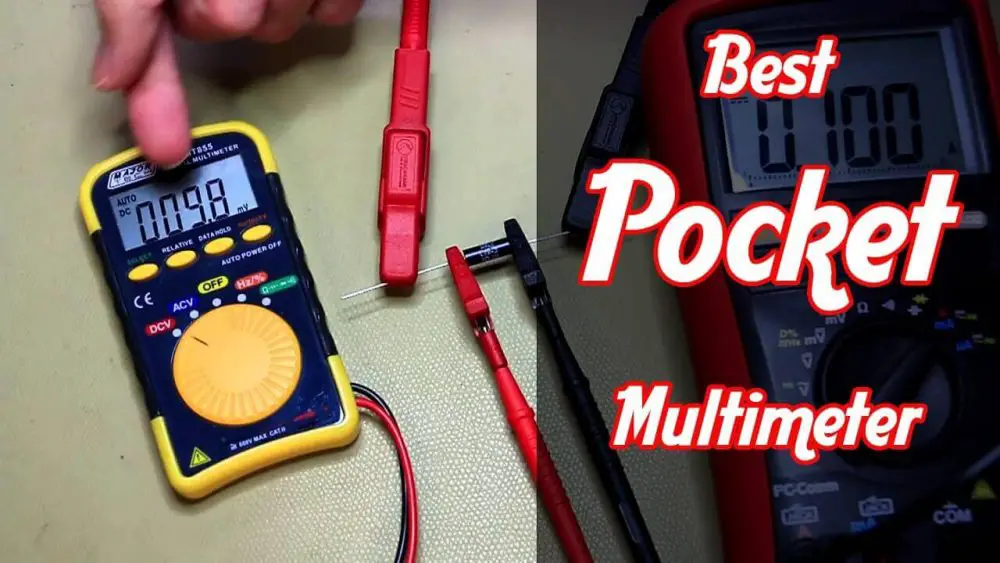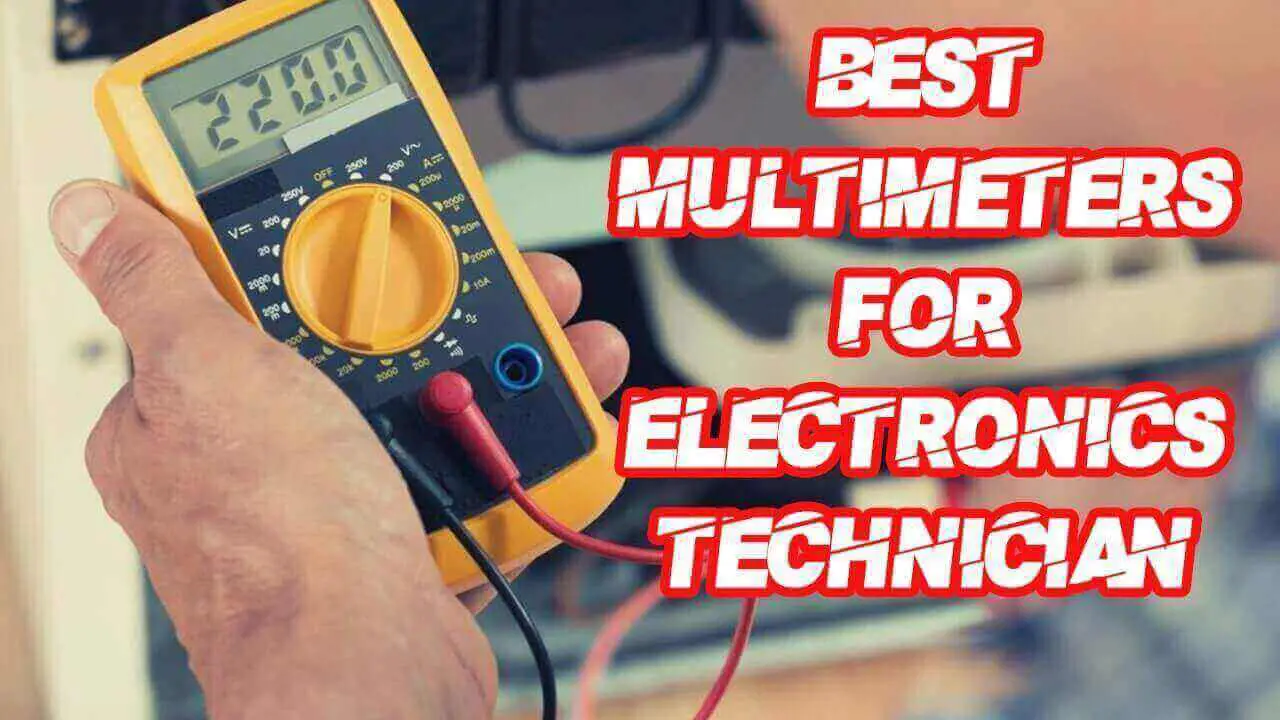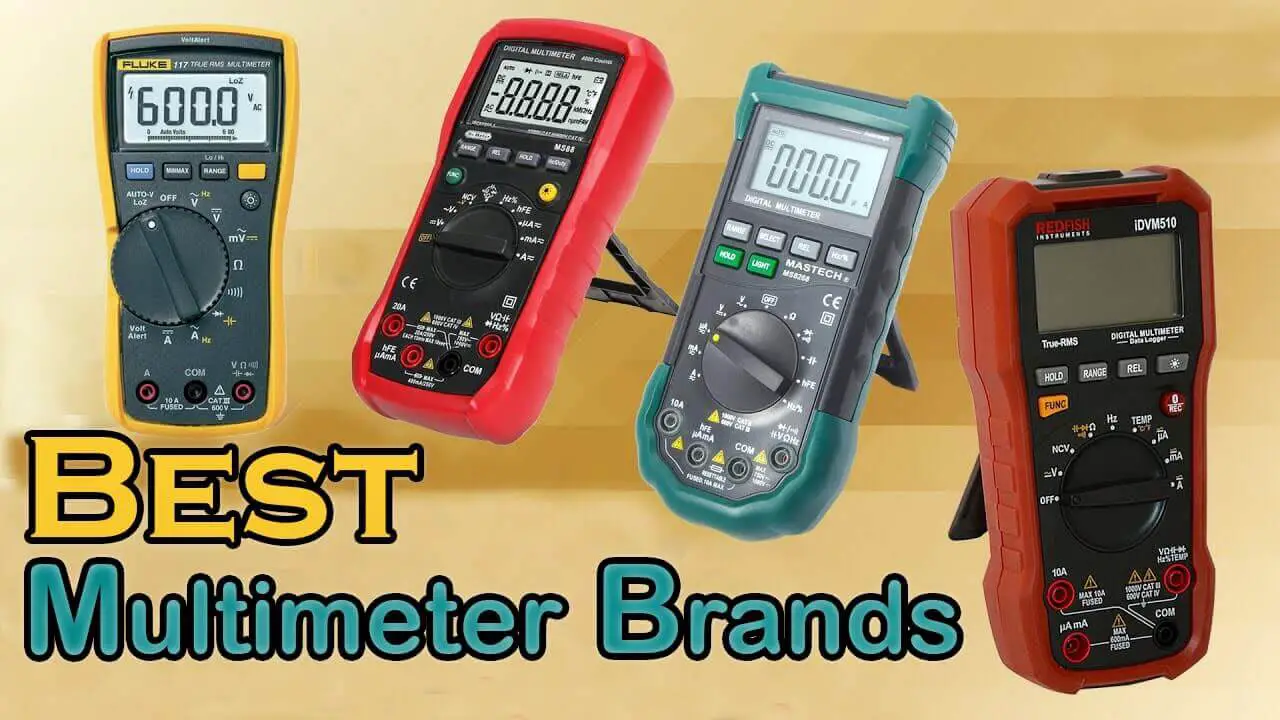Fluke 101 Digital Multimeter Review – Pocket Portable Meter
Quick Review Fluke 101
- Small, Lightweight
- Rugged and durable design
- CATIII, safety rated 600 V.
- Diode / continuity test with buzzer
- D/C volts accuracy: 0.5%
- Data hold.
- Auto power-off
- Size: 5.1″ (1.30cm) x 2.6″ (6.5cm) x 1.1″ (2.7cm)
- Weight: 5.6oz (160gm)
What’s in the box:
- Fluke Multimeter 101
- TL75 test leads
- AAA batteries
- Review of the Fluke 101 for beginners or expert who is looking for their first proper basic digital multimeter. For those looking for a compact quality digital multimeter for the job site.
- The Fluke 101 is exceedingly tiny and will easily fit in your hand & shirt pocket. Yet, it offers all the robustness, safety, and quality we have come to expect in a Fluke multimeter.
- Fluke 101 is a CAT III rating. Do not let its small size & low-price tag fool you! These are impressive little digital multimeters that you can take anywhere.
- The Fluke 101 digital multimeter is an entry-level, lowest cost digital multimeter. It offers the most used measurements, including A/C & D/C voltage, Ohms, Continuity, Diode, Capacitance, Frequency & Duty Cycle.
- The Fluke 101, however, does not have a current measurement. If you need current measuring capability, you may want to look at the Fluke 106 or Fluke 107. Fluke 100 series has true RMS but are still great little digital multimeters for beginners, hobbyists, DIYers, homeowners, builders, tinkerers, essential automotive & shop use.
- If you are tired of wasting your time & money on an overpriced digital multimeter that does not last, give inaccurate & inconsistent readings and are unsafe. Yet, you have always wanted a Fluke quality meter but did not want to spend too much, then look at the Fluke 101.
- Suppose you have been in the market for your first decent digital multimeter or want a secondary smaller multimeter for portable use. In that case, you take it out that type of thing, and we think we might have something interesting for you today to look at it.
Fluke 101 digital multimeter is a little meter. Like we said if this is going to be your first decent little digital multimeter. If you are spending on the stores, these are around 50 to 60 top amazing little multimeters with Fluke quality. Fluke 101 are high-quality portable meters, especially for your first buy.
Note:
If you are new to using multimeters, you might blow out the fuses of multimeters a lot by mistake. Suppose you put the probes into the wrong port. In that case, if you are shorting the leads right out and blow the HRC fuses, HRC stands for (high rupture capacity), and it is a sand-filled fuse. These fuses prevent the meter from blowing up in your hand; their sand absorbs all the energy. But these fuses are pretty expensive, so when you buy your first multimeter, I can almost guarantee you if you get something like this. We have all done it, like, we blow the fuses up! So that, this is one thing you do not have to worry about in Fluke 101 because there is no function to detect current, but you lose that function anyway.
Table of Contents
Fluke 101 Multimeter Device Features
Let the Fluke multimeter unpack; it has a protector. Get this protector off, so the metering did not get scratched up or anything. As you can see, it came with two AAA batteries, not the garbage one either actual energizer packs.
No bail to stand. And no holster to protect the body like Fluke 17B+.
Turn on the multimeter, the screen display is good with an excellent sharp contrast display, and it is slightly! Curved.
It has A/C voltage but auto-range. D/C volts and A/C millivolts
It has resistance, Ohms, measurement continuity and diode check.
Also, it can measure auto-ranging capacitance.
It has even got frequency and duty cycle.
So, we will check all that out; it’s got hold, so basically, just a freeze-frame.
No backlight or anything, but I cannot get over how small it is.
And the test leads it ships with are the fluke TL75, so these are the high flex silicone TL75 leads.
Which is a much nicer lead, but again this is an entry-level basic or second portable little handheld meter; there is nothing? Wrong with the TL75s?
Who will be using t this meter, and the TL75s come with the protective insulated probe and tip, so you have just got the tiny end of the probe you cannot short it against anything?
Fluke 101 Basic Functions
Continuity check
So, let us check continuity, first see how quickly it latches, not very spectacular. Still, it does the job and, really, for your first multimeter. I think most people would agree, especially in the hobby of RC or just average electronics, there is three or four.
Resistance and Capacitance check
Functions in Fluke 101, you will use mainly one is going to be D/C voltage the other one will be resistance and continuity checking. If you are into electronics, you may be using capacitance, so this has got all. That is the safety and robustness of a fluke.
CAT III Rated
As you see, it is rated at CAT III, so it is good up to 600 volts super safe little meter, not like the junky ones that could blow up in your hand.
A/C voltage and D/C voltage check
But let us check out; we will shove the probes here into the old wall or the old power bar, go into A/C. We will see how it reads! Okay, so our A/C voltage reading is 122.9, and as you can see, you do not have to worry about switching it even with that much power going through it.
Frequency and Duty cycle
It will be safe for it to go to hertz at 60 hertz 59.9, and the duty cycle should be 50. So, it is off a little bit, I can complain about BC hydro’s garbage service that we get here, but the 49.9 duty cycle should be 50. The frequency should be 60. So, it’s off a little bit and just as a comparison.
Let us plug in the better Fluke 17B+ here to compare the reading accuracy. See what it’s reading for voltage. Oh, look at that bang on the frequency where we are here in million, so reading the accurate frequency, this one’s off by a little bit. Its duty cycle is still 49.9, so yeah, they are very close.
Diode test
Let us check if we can do a diode test with these because in diode mode, you know it does not just limit your forward bias diode. You can also drive LEDs with it but the driving voltage.
I think it is only around 2 volts, so probably only going to drive a red and green. A yellow will not be able to drive blues or whites. There we go to check the diode, red LED is lit up, and there is a forward bias voltage of 1.7. There is the forward voltage on that two points. Call it two and try yellow 1.8, and I bet you the blue will not even light up, nope, so it will drive yellow-greens and reds if you wanted to check LEDs with it.
No True RMS
So, LEDs open it up and see what kind of build quality we have got. I should mention this is not true RMS., so better take the battery out if you wanted a true RMS meter to cross any of the Fluke 101s off your list.
- Affordable
- Small single-hand operation
- Lightweight
- Auto-hold
- Auto-range and auto power off.
- Probes ports are on the bottom of the device.
- There is no backlit.
Frequently Asked Questions
It has only two Jacks 1, Common 2, Power.
The multimeter is equipped with sand fuses, they are quite expensive, and these protect the multimeter to blow out.
Yes, this meter has both the auto range and the auto power-off functions.
The unit has all basic functions but no current check, so not for industrial purposes.
Conclusion:
The Fluke 101 digital multimeter is small compact and pocket size. It has all its basic functions. It can be used for occasional readings in offices at home and workplaces. But this multimeter is not suitable for industrial use. It is a single hand operation multimeter, at a very good affordable price. Some negative feature like it has only two jack ports, cannot measure current. No backlit. No temperature and True RMS check.
But at this price, it is good for tradesmen and amateurs. Overall rating is good for its accuracy and reliability with its affordability and accessibility.
Related posts:
Fluke 116 Digital Multimeter Reviews
Fluke 117/323 KIT Multimeter and Clamp Meter Combo Kit Review






